Martin Gardner and Physics




Martin's earliest interests included astronomy and science, especially physics, and he also loved science fiction. In his memoirs (see pages 13–14), he reveals that he was familiar with Hugo Gernsback's Science and Innovation magazine as a boy in the 1920s. He also adored the fictional works of H. G. Wells and Jules Verne, and many decades later, the works of IsaacAsimov, who became a good friend.
When Martin started attending the University of Chicago, in 1932, his plan was to transfer to Caltech, in Pasadena, CA, after two years, to study physics. However, as result of his growing interest in philosophy, he ended up staying in Chicago to pursue that instead.
Martin always loved basic science experiments and tricks, and was fascinated with more general physics, the solar system, and outer space. He wrote several science puzzle collections aimed at young readers, as well as penning significant and popular books on special relativity and symmetry.
In later life, Martin came to know Carl Sagan and Roger Penrose personally. In his memoirs, he remarks, "I had the honor of writing the foreword to [Penrose's] Emperor's New Mind." He also reviewed major works by Penrose and Hawking.
In 1983, he received the US Steel Foundation Prize for Science Writing from the American Institute of Physics for the article: "Quantum Weirdness" (Discover, vol 3, 68–76, Oct 1982).
In 1997, the American Physical Society gave Martin the Forum Award for Promoting Public Understanding of the Relationships of Physics and Society for "for his popular columns and books on recreational mathematics which introduced generations of readers to the pleasures and uses of logical thinking; and for his columns and books which exposed pseudoscientific bunk and explained the scientific process to the general public."
On the dust jacket of Martin's memoirs Undiluted Hocus-Pocus, the following words are attributed to John H. Conway:
"Martin Gardner was the most learned man I have ever met. He wrote articles and books for mathematicians, magicians, and puzzle lovers, and he didn't even get quantum mechanics wrong!"
Below we list many of Martin's contributions in this arena. Occasionally he sneaks in a little chemistry or psychology too. Reprints often appeared under different titles.
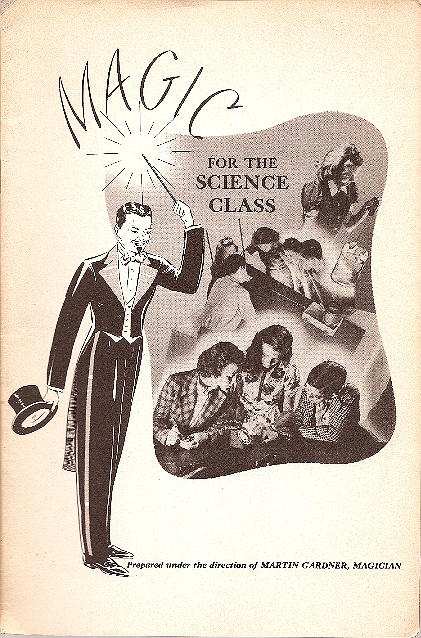
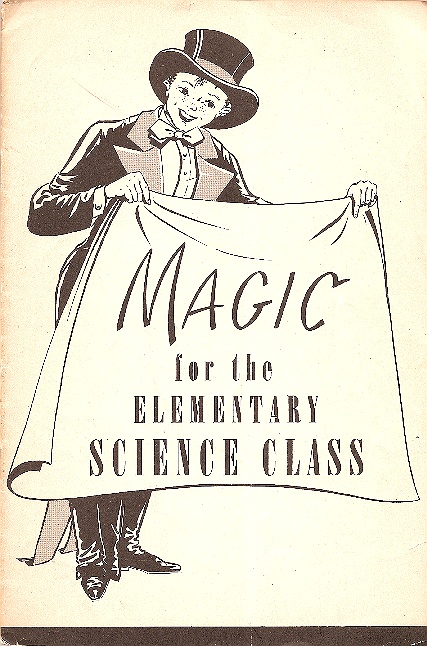
As their titles suggest, they were aimed at young school children and focused on surprising effects of a scientific nature using basic props.
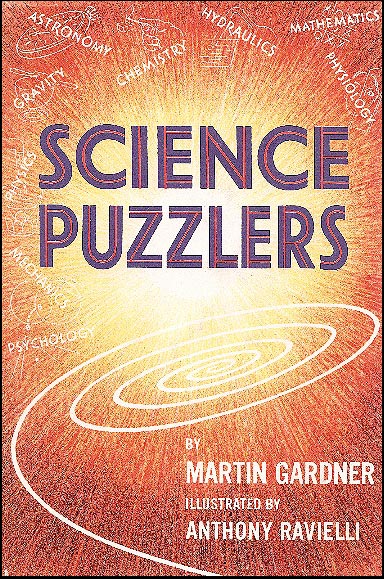
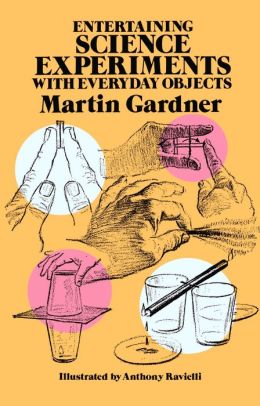
Science Puzzlers (Viking, 1960, 128 pages, illustrated by Anthony Ravielli) contains 100 entertainments organized into the following chapters: Astronomy, Chemistry, Physiology, Psychology, General Mathematics, Topology, Probability, Geometry, Numbers, Light, Gravity, Static Eletricity, Mechanics, Air, Hydraulics, Heat, Sound, and Inertia.
It was republished two decades later under the title Entertaining Science
Experiments with Everyday Objects (Dover, 1981). Apart from omitting
the final page (of "Selected References on Recreational Science") it was
unchanged from the original.
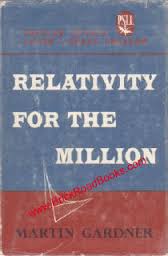
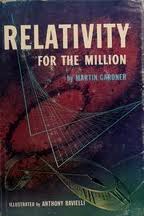
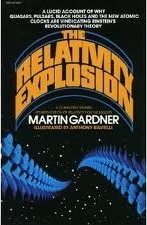
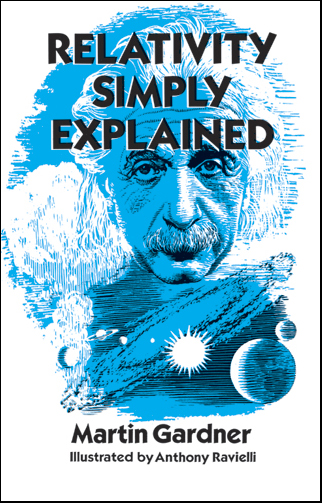
Relativity for the Million (MacMillan, 1962, Pocket 1965, 182 pages, illustrated by Anthony Ravielli) was an introduction to special relativity. Time dubbed it "by far the most lucid explanation of Einstein's theories."
It was later revamped as The Relativity Explosion (Vintage, 1976, 198 pages), and further revised as Relativity Simply Explained (Dover, 1997, 224 pages), all with art by the same illustrator.

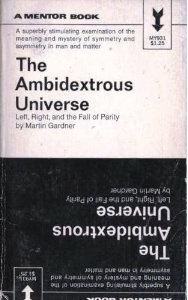
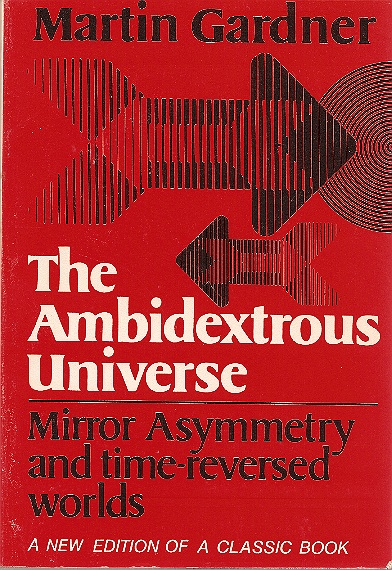
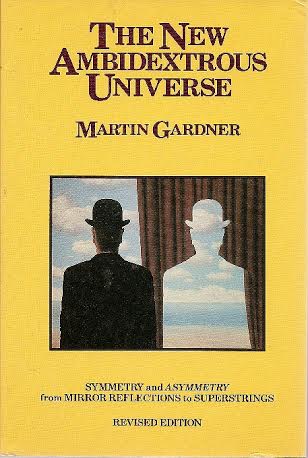
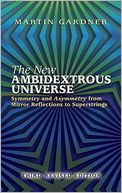
The Ambidextrous Universe: Left, Right, and the End of Parity (Basic, 1964, 294 pages, illustrated by John Mackey) was republished in updated form by Mentor (1969, 254 pages), and expanded for a 2nd edition as The Ambidextrous Universe: Mirror Asymmetry and Time-Reversed Worlds (Scribner's, 1979, 293 pages). It was later further expanded for a 3rd edition (with five new chapters, and all new graphics) as The New Ambidextrous Universe: Symmetry and Asymmetry from Mirror Reflections to Superstrings (Freeman, 1990, 14 + 392 pages), and finally revised once last time and issued by Dover (2005, 14 + 401 pages).
Martin explains its genesis in the Preface to the 2nd edition:
In 1952, intrigued by what in this book I call the Ozma problem, I wrote a paper, "Is Nature Ambidextrous?," that appeared in the Journal of Philosophy and Phenomenological Research (December 1952). In it I considered the possibility that someday a basic law of nature might prove to be left-right asymmmetric. I ruled this out as unthinkable. Five years later, the unthinkable occurred. It was the shock of this discovery, the fall of parity, that prodded me into writing an entire book about mirror-reflection symmetry.I completed this book, The Ambidextrous Universe, in 1963 and it was published the following year by Basic Books. No sooner was it on sale than another almost unthinkable event took place—time-invariance symmetry was found violated in the same weak interactions that violated parity. I was able to add a few pages about this to a Mentor paperback edition of the book, but it deserved much better than that. Indeed, it was the main reason for a second edition.
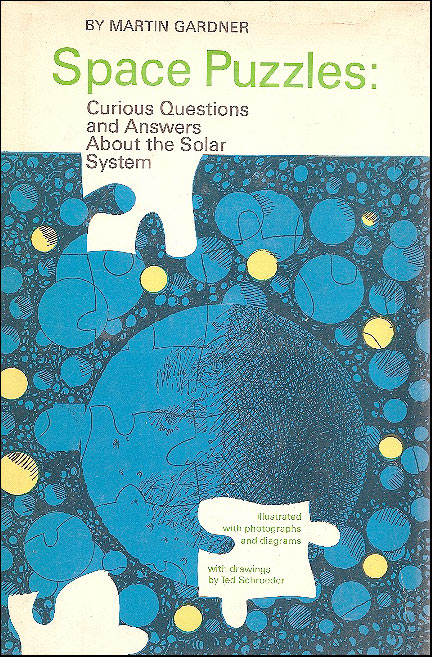
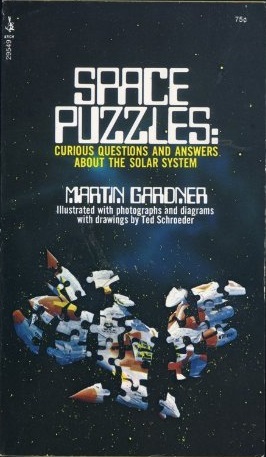
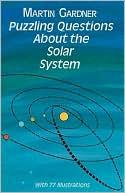
Space Puzzles: Curious Questions & Answers About the Solar System
(Simon & Schuster, 1971, 96 pages, illustrated by Ted Schroeder)
was reissued as
Puzzling Questions About the Solar System (Dover, 1997).
From 1990 to 2002, Martin contributed a "Trick of the Week" feature to The Physics Teacher
magazine. (From 1994 to 2004 some of these resurfaced with new art by Tom
Jorgenson in Magic
magazine under the banner "Martin Gardner's Corner.") He also published in
the American Journal of Physics occasionally. See here
for links to many of these pieces.
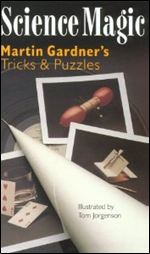
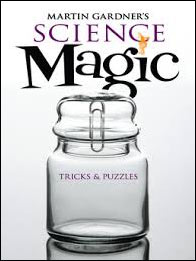
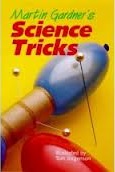
Science
Magic: Martin Gardner's Tricks and Puzzles (Sterling, 1997, 98 pages,
illustrated by Tom Jorgenson)) was issued in
paperback as Science Tricks (Sterling, 1998). Like its sequel below, it
includes material from his long-running "Trick of the Week" feature for
The Physics Teacher magazine (see above).
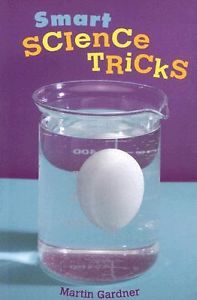
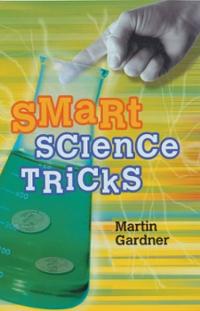
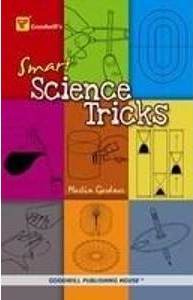
Smart Science Tricks (Sterling, 2004, 144 pages, illustrated by Bob Steimle), has been available in three different covers, and contains 95 items.
Martin's extensive reviewing saw him comments on key works by and about Newton, Asimov, Hawking, Penrose and others.
Click here for more information on Martin's science puzzle books.